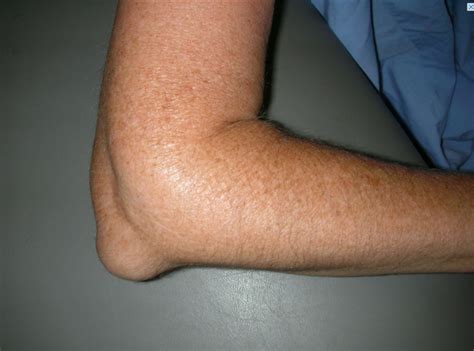Intro
The human body is a complex and fascinating system, with numerous components working together to maintain overall health and functionality. One often-overlooked aspect of the body is the elbow olecranon bursa, a small fluid-filled sac that plays a crucial role in reducing friction and promoting smooth movement in the elbow joint. However, when this bursa becomes inflamed or irritated, it can lead to significant discomfort and limited mobility. In this article, we will delve into the world of elbow olecranon bursa, exploring its importance, common issues, and effective management strategies.
The elbow olecranon bursa is a vital structure that cushions the olecranon, the bony prominence at the back of the elbow, and the skin that covers it. This bursa allows for frictionless movement of the elbow joint, enabling individuals to perform various activities with ease and precision. However, when the bursa becomes inflamed, it can lead to a condition known as olecranon bursitis, characterized by swelling, redness, and pain in the affected area. This condition can be caused by a variety of factors, including trauma, infection, or repetitive motion.
Understanding the causes and symptoms of olecranon bursitis is essential for effective management and treatment. Common symptoms include swelling, pain, and limited mobility in the elbow joint, as well as redness and warmth in the affected area. In severe cases, the bursa may become infected, leading to increased pain, swelling, and potentially serious complications. Fortunately, there are several strategies that can help alleviate symptoms and promote healing, including rest, ice, compression, and elevation, as well as physical therapy and medication.
Understanding Elbow Olecranon Bursa

Anatomy and Function
The elbow olecranon bursa is located at the back of the elbow, between the olecranon and the skin that covers it. This bursa is composed of a thin membrane that produces a small amount of fluid, which helps to reduce friction and promote smooth movement in the joint. The bursa is surrounded by a network of blood vessels, nerves, and connective tissue, which provide nutrients and support to the surrounding structures. When the bursa becomes inflamed, it can lead to a range of symptoms, including pain, swelling, and limited mobility.Causes and Symptoms of Olecranon Bursitis

Risk Factors and Prevention
Several risk factors can increase the likelihood of developing olecranon bursitis, including trauma, infection, or repetitive motion. Individuals who participate in activities that involve repetitive elbow movement, such as tennis or golf, may be at increased risk of developing this condition. Additionally, individuals who have a history of trauma or infection in the elbow joint may be more likely to develop olecranon bursitis. Preventative measures, such as wearing protective gear and taking regular breaks, can help reduce the risk of developing this condition.Diagnosis and Treatment of Olecranon Bursitis

Treatment Options
Treatment options for olecranon bursitis depend on the severity of the condition and the individual's overall health. Common treatment strategies include: * Rest, ice, compression, and elevation (RICE) to reduce pain and inflammation * Physical therapy to improve range of motion and strength * Medication, such as anti-inflammatory or antibiotic drugs, to reduce pain and inflammation * Surgery to drain the bursa or remove any infected tissueManagement and Prevention Strategies

Lifestyle Modifications
Lifestyle modifications can play a significant role in reducing the risk of developing olecranon bursitis and promoting overall elbow health. This can include: * Avoiding activities that involve repetitive elbow movement or heavy lifting * Taking regular breaks to rest and stretch the elbow joint * Maintaining a healthy weight to reduce pressure on the elbow joint * Engaging in regular exercise, such as stretching or strengthening exercises, to improve range of motion and strengthComplications and Long-Term Outlook

Prognosis and Recovery
The prognosis and recovery for olecranon bursitis depend on the severity of the condition and the individual's overall health. With prompt treatment and proper care, most individuals can expect a full recovery and return to normal activities. However, in severe cases, the condition may require ongoing management and treatment to reduce the risk of complications and promote overall elbow health.What is olecranon bursitis?
+Olecranon bursitis is a condition characterized by inflammation of the elbow olecranon bursa, leading to pain, swelling, and limited mobility in the affected area.
What are the symptoms of olecranon bursitis?
+Common symptoms of olecranon bursitis include swelling, pain, and limited mobility in the elbow joint, as well as redness and warmth in the affected area.
How is olecranon bursitis diagnosed?
+Diagnosing olecranon bursitis typically involves a physical examination, medical history, and imaging tests, such as X-rays or MRI.
In conclusion, the elbow olecranon bursa plays a vital role in reducing friction and promoting smooth movement in the elbow joint. However, when this bursa becomes inflamed, it can lead to significant discomfort and limited mobility. By understanding the causes and symptoms of olecranon bursitis, individuals can take proactive steps to reduce their risk of developing this condition and promote overall elbow health. If you have any questions or concerns about olecranon bursitis or elbow health, we encourage you to share your thoughts and engage in the conversation. Additionally, we invite you to share this article with others who may be interested in learning more about this important topic.
